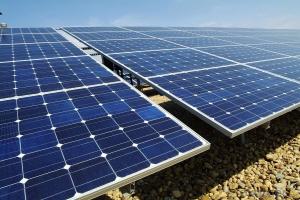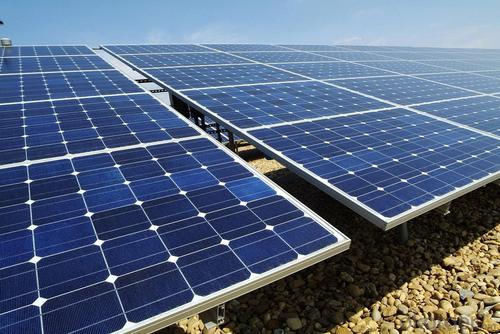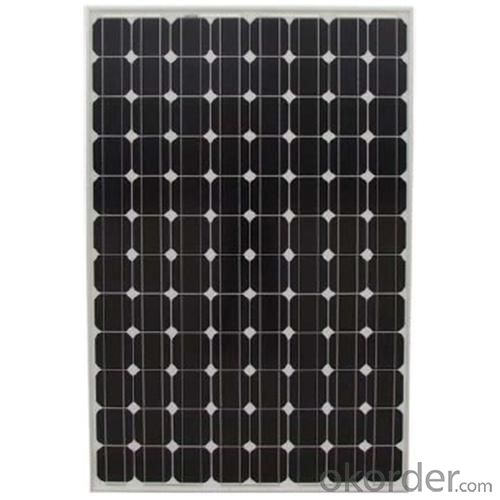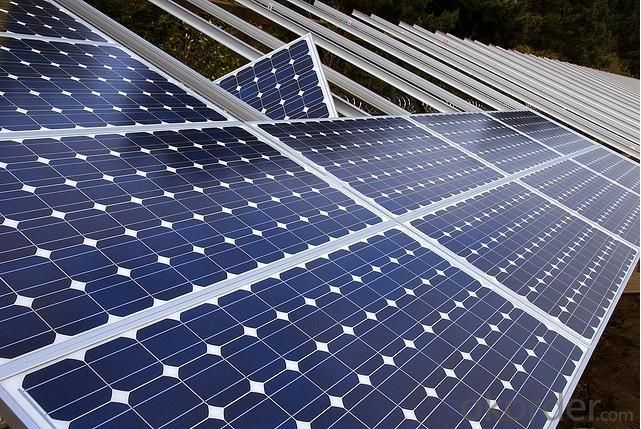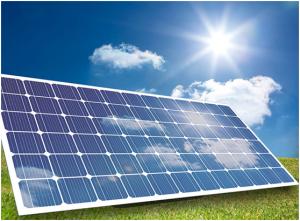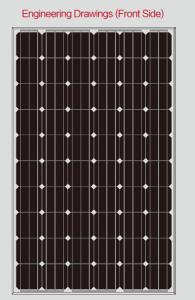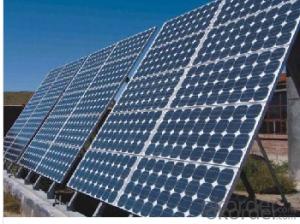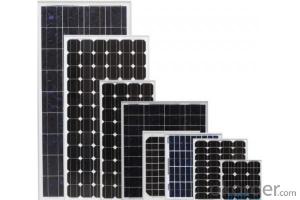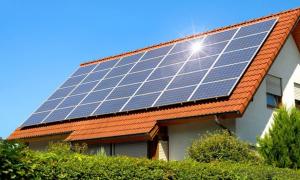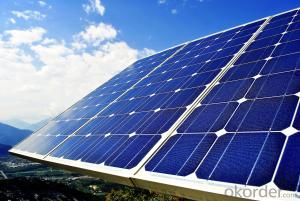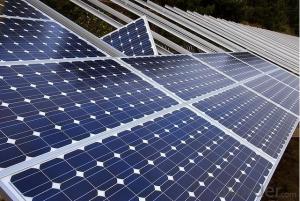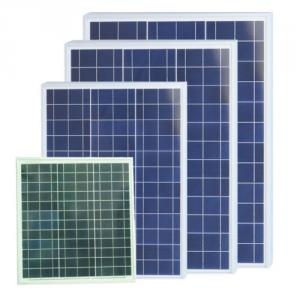Solar Panels West Palm Beach FL - Solar Panel Solar Module PV Solar Grade 300W
- Loading Port:
- Shanghai
- Payment Terms:
- TT OR LC
- Min Order Qty:
- 1 watt
- Supply Capability:
- 10000000 watt/month
OKorder Service Pledge
OKorder Financial Service
You Might Also Like
Specification
Solar panel material
1. glass
Its main role is to protect the power generation ( solar cells ) , there is a selection of light transmittance requirements : 1 ) must be high transmittance (typically 91% or more ) ; 2 ) super white steel processing.
2. EVA
For bonding glass and power generation fixed body ( such as cells ) , transparent EVA material directly affect the life of components exposed to the air EVA prone aging yellow , thus affecting the transmittance components , thus affecting in addition to generating the quality of the components itself, the quality EVA lamination process on the component manufacturers is also very large, such as EVA plastic viscosity of non-compliance , EVA and glass, back bonding strength is not enough, can cause premature aging EVA, the affected component life.
3. Solar cells
The main role is to generate electricity , the electricity is the main market mainstream film crystalline silicon solar cells , thin-film solar cells , both have their advantages and disadvantages . Crystalline silicon solar cells , the equipment costs are relatively low , but the high cost of consumption and cells , photoelectric conversion efficiency is high, the next generation in outdoor sunlight is more appropriate ; higher thin-film solar cells , the relative cost of equipment , but the cost of consumption and battery low, relatively low photoelectric conversion efficiency of crystalline silicon solar cells , but the effect is very good low-light , in the ordinary light can also generate electricity , such as solar calculator .
4. backplane
Sealing, insulation , water ( usually with TPT, TPE , etc. ) the material must be resistant to aging , component manufacturers generally have warranty for 25 years , tempered glass, aluminum is generally no problem , the key lies in whether the backplane and can meet the requirements of silica gel.
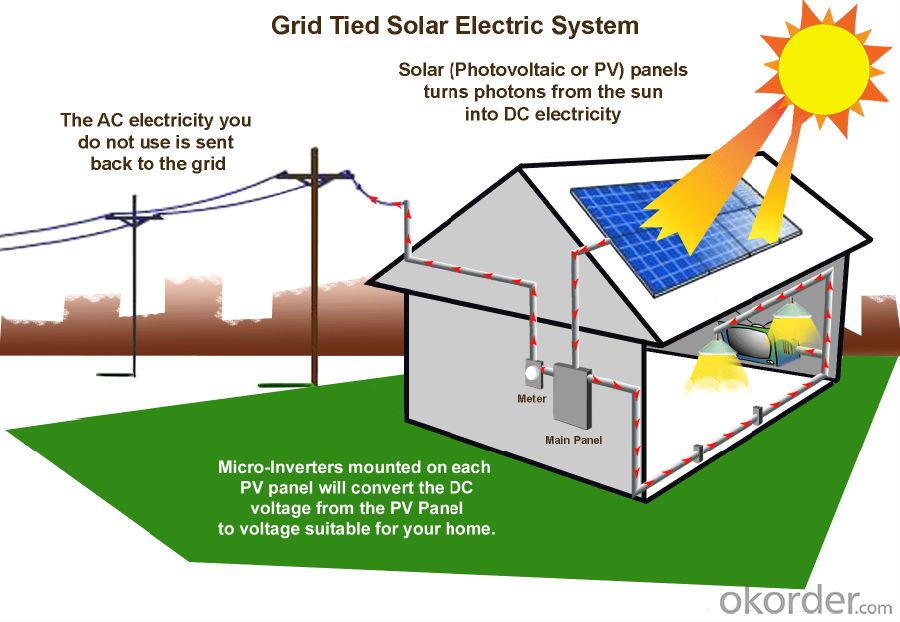
PERFORMANCE
- High effi ciency, multicrystalline silicon solar cells with high transmission and textured glass deliver a module effi ciency of up to 16.0%,
minimizing installation costs and maximizing the kWh output of your system per unit area.
- Tight positive power tolerance of 0W to +5W ensures you receive modules at or above nameplate power and contributes to minimizing
module mismatch losses leading to improved system yield.
- Q: I was wondering if they create other forms of energy besides electrical that is unwanted. Like heat due to the friction of something, or sound. Also why is a solar panel not able to collect 00% of the energy that is striking its panels. And how could the efficiency of this be hypothetically improved.
- Science. The best solar panels we have only get like 22% of the sunlight for conversion into energy. That is simply the best they know how to make with current technology. And for that your talking about a mobile panel that tracks the sun as it moves at the equator. A solar panel in say Canada is lucky to get 0% even on a sunny day. But even if a solar panel got 00% efficiency, it's still not a lot. Sunlight is too diffuse to be a good power source, and you'd need to cover lots of ground to get power. Worse, you can only get power when the sun is out during the day. So for power at night you'd need a battery, or another source of power. The 'newest' idea is to capture sunlight to make 'lasers' that boil water, to turn turbines and make electricity. They cost way more then they are worth right now though...
- Q: Am using 800watts sukam inverter and have 55watts panel. What controller can i use to connect my solar system to have a max power . Already i have 200 Amp/hr battery
- You need a charger Controller but 55 watt panel is not a whole lot of power. So yes you can buy a very good one but it will cost a lot more. For a 55 watt panel you only need a 4 to 7 amp controller. But why not buy a 0 amp so you can add a second solar panel etc... A PWM (Pulse Width Modulated) is the cheapest and most robust type MPPT (Maximum Power Point Tracking) These controllers actually detect the optimum operating voltage and amperage of the solar array and match that with the battery bank. The result is additional 5-30% more power out of your array versus a PWM controller So unless you have a system over 200 watt the PWM works very good I have two of the PWM myself
- Q: Hi! I bought a Coleman 2 vdc cooler that pulls 9 amps. What size solar panel and amp-hour battery do I need? I only open it 3 times a day. It will hold about 3 gals of milk.
- If it pulls 9 amps continuously, that's 08 watts/hour or about 2.5 kwh/day. If it only pulls half that (does it cycle?) it's about .2 kwh/day. You only want to drain a lead-acid battery 50% or so, so you'll want a 5 or 2.5 kwh battery pack. A typical setup for the 5 kwh would be two L-6 batteries in series, and for the 2.5 kwh you could use 2 T-05 batteries in series. This does not account for days of cloud. If you regularly have cloudy days, size the battery pack for two or three days of use with no input (2-3 x the sizes given above). To charge them, you typically want panels that will charge your battery at least 5% of its capacity per hour (C/20). For 2 volt nominal panels that's 0 amps for the T-05 or 20 amps for the L-6 batteries. It's good to have more than that for battery life (it cuts down on what's called stratification), so you'll want probably 50-200 watts of panels for the T-05 and 300-400 for the L-6. You'll also need a charge controller. Peltier coolers are very inefficient. You'll save money by using a regular mini-fridge and an inverter. Most mini-fridges only draw 50 watts or so, so you're talking 600 watt-hours for a 50% duty cycle. This means two T-05 batteries will give you two days of use and you'll only need 20-50 watts of panel. DK
- Q: We've been considering solar panels for a while now, and we'd like to know a little more about them. Please answer to the best of your knowledge. Thanks.
- It is definitely worth doing your homework to evaluate how much you electricity you want to obtain, what you location will allow, and the availability of state and federal tax credits. I suggest reading about it in a book or e-book. Check out the referenced source on solar calculator for cost and size detailed information, it's fun and informative.
- Q: Monocrystalline panels are sooo expensive! Thanks for reading.
- image voltaic thermal or warm water beats PV or Photovoltaic on a daily basis. The Mono and Poly are the main conventional. they provide years of provider and function a shown song checklist. they do no longer seem to be very warmth tolerant. production will flow down on warmer day as maximum shrink sheets will instruct. Amorphous Panels are greater warmth tolerant. they're additionally greater valuable at production with ,low easy or in part cloudy days. They produce much less what in keeping with sq. foot and want a larger section. First image voltaic produces those variety of panels. HIT by utilizing Sanyo blends those 2 together to produce a panel with the main suitable of the two structures. All PV is costly. The payoff tiers from 7-2 many years in keeping with many components.
- Q: We see increasing, what appear to be, solar panels on electric poles?
- Usually they are used to power monitoring units that transmit data to a central point on usage and/or line loads. They may also be used to supply power to some control circuits, and to allow remote control of these units. (If there was no power in the line, how else could you supply the needed power to obtain information and/or control these things remotely.) What they do is keep a standby or backup battery charged to operate the equipment. They are also used for self-powered lights in many areas, charging batteries during the day to run the light(s) at night. Similar systems are used on monitoring wells to transmit water table data. (Faster, cheaper, and more timely than sending someone around to make checks and read equipment once every couple of months.)
- Q: I bought a pack of OEM mini solar panels that produce 4.2v and 22mA and I was just wondering how many LED's I could hook up to one mini solar panel? I currently have one green LED with a resistor on the one panel but was wondering how many I could possibly run off of one panel?
- Typically LED's run off low voltage and 20mA or so of power (it depends what kind of led you have). That being said if one of your solar panels only provides 22mA of power then your circuit would have to be a series circuit for you to connect more than one. In a series circuit the current supplied of 22mA will go through each LED whereas a parallel circuit the current would be divided for each subsequential led. So in your case i can see you getting away with 3 or so led's before the voltage drop across each led will cause the voltage to be insufficient enough to drive anymore. Keep in mind the LED's will turn on but the first one will be bright then next one not as bright and so on. If you opted out and bought a solar panel with 200mA and 4V you could wire the led's in parallel and get 0 led's to turn on with the same brightness or intensity. Hoped that helped!
- Q: i've heard that solar panel batteries have to be replaced withen 5-0 years. how much do solar panel batteries cost? please include sources!
- Depends on how big a battery you want and what technology. A lot of people use lead-acid batteries (rather like car batteries) and they do need replacing and 5 to 0 years isn't a bad estimate. However, the lead and lead salts content can easily be recycled into new batteries so its not as bad as it may seem.
- Q: I want to put a solar panel(s) on my roof. What components do I need besides the solar panels? solar power controller? wires? How do I hook it into my home's electrical system and about how much electricity could I generate and save? Would the panels pay for themselves over time? Any help will be appreciated. Thank you!
- The first thing that you have to realize is that solar panels only make DC currant. This is used to charge batteries which when hooked to an inverter will make 20 v. AC. You need a large bank of batteries and a heavy duty inverter to power your house. There is also an automatic switch that will send power back to the utility company when you have excess power available. This is not a small project. Really think this out before you invest a lot of money for nothing.
- Q: when building a solar panel should the diode be on the positive or negative sidelittle more detail i just built a solar panel and im running it to a grid tie converter should i put diodes in if i add another panel or are they only for battery systems?
- I'm assuming you're talking about the blocking diode and not the bypass diodes. Positive side.
Send your message to us
Solar Panels West Palm Beach FL - Solar Panel Solar Module PV Solar Grade 300W
- Loading Port:
- Shanghai
- Payment Terms:
- TT OR LC
- Min Order Qty:
- 1 watt
- Supply Capability:
- 10000000 watt/month
OKorder Service Pledge
OKorder Financial Service
Similar products
Hot products
Hot Searches
Related keywords
